Magnesium sulfate, also known as Epsom salt, is a vital tool for improving both plant performance and garden productivity. This article examines the plants and crops that gain the most from applying Epsom salt and elucidates how magnesium contributes to important processes such as chlorophyll production, nutrient absorption, and defense against stress. By knowing what various plants require, gardeners can purposefully employ Epsom salt in their farming methods, thus enhancing growth, boosting yields, and ensuring healthy, vibrant plants. In this regard, we will explore these special requirements of the plants by giving comprehensive instructions on dosage rates, timing, and application techniques to help you get the best out of this necessary mineral booster in your gardening activities.
The Benefits of Epsom Salt in Gardening
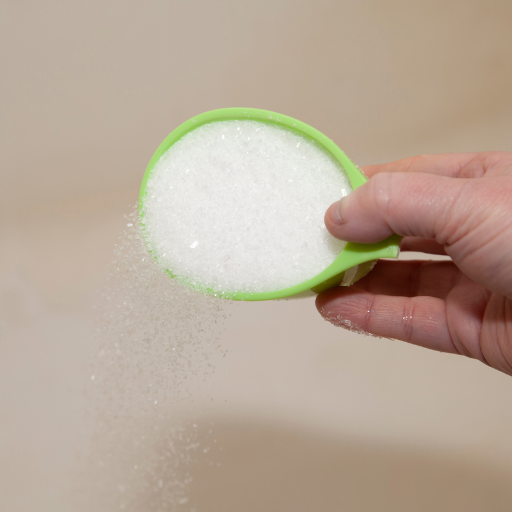
Epsom salt is rich in magnesium and sulfate content, which makes it useful in gardening. Magnesium is crucial for photosynthesis as it is a major component of chlorophyll that aids in the absorption of sunlight and conversion of light energy into chemical energy. This results in improved growth and leaf health among plants. Additionally, the sulfate component promotes general plant development by enhancing protein and enzyme synthesis. Epsom salt also increases nutrient uptake by plants, especially nitrogen, phosphorous, and potassium, thus promoting enhanced root systems and better flowering and fruiting. Moreover, when used appropriately, Epsom salt can help plants overcome stress caused by drought, hence making them more resilient and productive. Epsom salt is a useful supplement to enhance garden health and yield if applied correctly.
Understanding Epsom Salt: What It Is and How It Works
Chemically known as magnesium sulfate (MgSO₄), Epsom salt is a naturally occurring mineral compound important for plant life processes. Magnesium ion (Mg²⁺) plays an essential role in the synthesis of chlorophyll molecules that directly influence the photosynthesis process within a plant because this process requires optimum levels of magnesium ranging between 0.2-0.5% in most plant tissues for the effective functioning of the cells involved that helps convert light energy to chemical energy. Sulfate or SO₄²⁻ aids with the formation of essential amino acids/ proteins, therefore indicating that sulfate ions must always be present in certain amounts, about 0.1-0.3%, depending on different varieties.
Once applied to soil or sprayed onto foliage surfaces,Epson salts decompose, releasing magnesium and sulfate ions that are absorbed by the roots or leaves. The recommended frequency depends on respective crop types, but commonly advised are to apply 1-2 tablespoonfuls per gallon for foliar spraying or use 1-2 cups per hundred square feet of field soil. Timing is also important; the pre-flowering or fruiting stages are the most critical growth periods when Epsom salt should be applied to maximize its benefits.
Furthermore, Epsom salts enhance the bioavailability of vital nutrients. In magnesium-deficient soils, for example, nitrogen (N), phosphorous (P), and potassium (K), which are essential macronutrients that promote improved plant development and flowering, are absorbed more efficiently. By understanding how to apply this product properly in their garden or farm setting, individuals can realize its full potential by optimizing nutrient absorption rates, improving all growth characteristics as well as increasing harvests tremendously.
The Science Behind Magnesium and Sulfate for Plants
In photosynthesis and enzyme activation processes, magnesium serves as an active catalyst through its role in the chlorophyll molecule. It helps to absorb light energy necessary to convert carbon dioxide and water into glucose and oxygen. This study discloses that reduced availability of magnesium causes chlorosis characterized by yellow leaves, stunted growth, and a decline in yield. The optimum concentration of magnesium typically ranges from 0.2% to 0.5% for most plant species so as to ensure effective photosynthesis and control growth.
Sulfate derived from sulfur is equally important since it plays a part in making vital amino acids and proteins, thus affecting general plant health. If there is not enough sulfur then this could be seen because plants become shorter with few flowers. Still, advisable amounts of sulfate are usually between 0.1- 0.3% found within various vegetable parts e.g.leaves.Sulfate ions significantly increase the bioavailability of nitrogen (N), phosphorus (P) & potassium (K), thereby promoting strong vegetative growth traits plus increased crop production levels.
Epsom salt (magnesium sulfate) can be applied to correct deficiencies. For example, research indicates that foliar applications at the rate of 1 to 2 tablespoons per gallon of water improve absorption after application, especially during the critical growth stage. Soil applications may be guided by a rate of 1 to 2 cupfuls per 100 square feet, allowing systemic uptake by the root system. Magnesium and sulfate synergism are crucial in maximizing nutrient utilization and establishing optimum plant development.
A Comparison between Epsom Salt and Traditional Fertilizers
Comparing Epsom salts with traditional fertilizers requires an appreciation of the distinct roles each plays in plant nutrition. In a typical case, traditional fertilisers mainly contain primary macronutrients (nitrogen, phosphorus, potassium), but they might have secondary nutrients such as calcium and magnesium in low levels. Conversely, magnesium and sulfur are some components often lacking in most regular fertilizers that Epsom salt replaces.
According to reputable sources, Epsom salt is effective on different plant species because it has the ability to improve nutrient uptake and promote enzymatic activities. For instance, while traditional fertilizers may deliver magnesium content into plants, it is normally less than 0.2-0.5% which is needed for optimal performance of plants; hence before considering their use, soil tests should determine how much Mg is present in the soil or how much Mg fertilizer should be used particularly on sandy soils or soils derived from sandstones or shale rocks (Marschner, 1995). Some traditional products, especially those for magnesium-deficient soils, when compared with others, then, efficiently increase photosynthetic efficiency since their molecular composition facilitates quick absorption reactions like other fertilizers (Wang et al.,2017).
This technical parameter highlights the rates of application and shows that there are cost-effective solutions provided by Epson salt: the foliar application rates of 1 to 2 tablespoons per gallon of water provide a simple way to increase nutrient uptake. Conversely, conventional fertilizers are more complicated in formulation and may, therefore have more chances for losing nutrients through run off thus reducing their overall efficiency and endangering the environment. So, even as regular fertilizers attend to wider range of nutrient requirements, Epsom salt comes as a targeted remedy that effectively enhances plant health and productivity once it is used together with them judiciously.
Popular Vegetables That Thrive with Epsom Salt
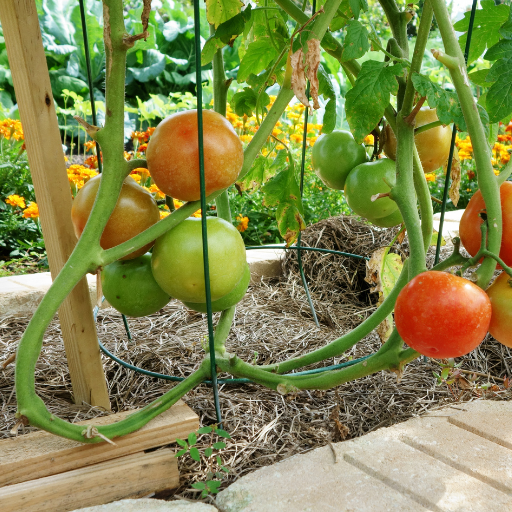
Epsom salt can boost the health and growth of many vegetables. Magnesium-rich tomatoes are the most responsive, able to uptake more nutrients for better fruit quality. Other magnesium lovers include peppers that yield better with healthier foliage especially when growing in magnesium deficient soils. Also, leafy greens like spinach and lettuce do well through Epsom salt application as they require magnesium for chlorophyll production which in turn increases photosynthetic efficiency towards overall growth. These vegetables would, therefore, benefit from regular application of Epsom salts both at home gardens or commercial farms.
How Epsom Salt Aids Tomato Growth
Epsom salt is a substance rich in magnesium that plays an essential role in tomato plants’ development and productivity. In nutrient-deficient soils, tomatoes that require adequate amounts of magnesium gain much more from it. This was backed by research indicating that foliar applications of 1-2 tbsp per gallon effectively increase magnesium availability (Gallardo & Thompson, 2016).
Magnesium, derived from nutrient dynamics, functions as one of the core elements making up chlorophyll, which leads to increased photosynthesis, thus contributing to healthy plant growth and fruiting. This further enhances nutrient absorption by facilitating calcium uptake which is necessary for preventing blossom end rot— a condition common among tomatoes due to insufficient amounts of calcium within their tissues. For this reason, applying Epsom salt once every month throughout the season may help increase yields while improving fruit size and other physiological aspects such as vigor. By employing regular fertilization techniques together with Epsom salt, growers will ensure that their tomato crops achieve optimum potential growth rate and good health status.
Enhancing Pepper Yield and Flavor with Epsom Salt
The use of Epsom salt also helps improve pepper plants’ flavor and yield. The high levels of magnesium found in it help in making chlorophylls for photosynthesis, hence supporting general wellness in plants, too. Regular Epsom salt applications can enhance calcium absorption and help prevent blossom end rot, a condition caused by stress. One tablespoon per gallon of water applied at the flowering stage and fruit set results in peppers that have better flavor profiles with larger fruits and higher yields (Gallardo & Thompson, 2016). In addition to making them more visually appealing, Epsom salt usage also enhances the colour of pepper fruits thereby increasing their market value. Growers are therefore advised to include magnesium in their fertilizers as part of their feeding programs throughout the entire life cycle of a pepper plant.
Epsom Salt’s Influence On Leafy Greens
Epsom salt in its application to leafy greens, like spinach or lettuce, has been widely recognized for many years for its benefits on growth and nutrient content. Magnesium sulfate takes part in chlorophyll production necessary for photosynthesis, which results in healthier plants. According to studies, continued use can increase the levels of magnesium in the soil thus enhancing nutrient uptake. This improvement helps avoid common diseases such as curling leaves and lack of nitrogen that would deprive the crops of their vibrant color and crispness. Furthermore, adding Epsom salt can be used to improve the overall crop yield hence a high nutritional value harvest. Based on efficient use, one gallon should contain a tablespoon and be applied when plants are at mid-growth stages towards exploiting the maximum benefit derived from magnesium and sulfur for the healthiest plants.
Flowering Plants That Benefit from Epsom Salt
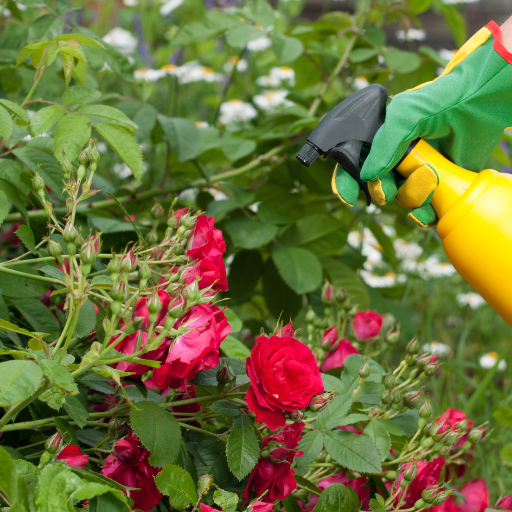
Flowering plants that greatly benefit from Epsom salt applications include roses, tomatoes, as well as peppers. Roses, for example, readily respond to magnesium sulfate, which in turn improves flower development and facilitates strong blooming by generally improving the plant’s health and making it more resistant to diseases. For tomato fruits, it plays a role in fruit formation, increasing yields while reducing some, like blossom end rot related to calcium and magnesium deficiencies that have embraced the use of Epsom salt. Further, magnesium intake is improved, thus increasing the availability of nutrients required during flowering periods in pepper plants, hence more flowers being formed, which are also healthier when Epsom salts are added. Application of Epsom salt should start at the onset of flowering and continue through the growing season with enough amount so that sufficient magnesium is absorbed for robust growth and formation of flower buds.
Roses: Growing Bigger Blooms with Epsom Salt
To get bigger blooms on roses using Epsom salt you should know how important magnesium sulfate can be for developing flowers. When applied, this compound enables better nutrient absorption( particularly during important flower stages), thereby enhancing plant health resulting from increased nutrient uptake. You are advised to apply 1 tablespoon of Epsom salts mixed into a gallon container (about 4 L) of water every two weeks starting after new buds have appeared. This provides a steady supply of magnesium that makes your bloom stronger. Moreover, ensuring good drainage soil conditions, correct watering procedures, regular pruning aimed at improving air circulation as well as penetration by light rays within rose bushes, among other strategies, will lead to bigger roses characterized by brighter colors.
Hydrangeas: Boosting Color and Growth
Epsom salt application may be useful for hydrangeas because they contain high concentrations of sulfur and magnesium which further lead to increased coloration in these plants. The vivid blooms produced by this plant and its deep green foliage rely on the presence of adequate chlorophyll production in the leaves, a process that is facilitated by magnesium. It is recommended that this be done at the beginning of the growing season using between 1 and 2 tablespoons of Epsom salts per gallon of water. This could help increase flower production in certain species like bigleaf hydrangeas that change color with soil pH from pink to blue and intensity. Consistent moisture levels and a well-balanced fertilizer schedule are also key in promoting healthier plants throughout their lives. Another way is to prune regularly to expose more direct sunlight for every flower or evergreen plant.
Azaleas and Rhododendrons: Strengthening Acid-Loving Plants
To strengthen acid-loving plants such as azaleas and rhododendrons, Epsom salt can be used due to its magnesium content, which helps in improving general well-being as well as bloom quality. During the period of active plant growth, one tablespoonful of Epsom salts mixed into one gallon (approximately four liters) of water can be applied directly to the roots through soil drenching or by spraying it on young leaves using a spray bottle. The practice does not only aid in chlorophyll formation but also enhances nutrient absorption in acidic soils available for uptake. In addition, use organic mulches like pine straw bales or oak leaves to maintain soil acidity, improve moisture retention and decompose nutrients into the ground as they rot down. Maintain soil pH between 5.5 and 6.0 for optimal nutrient absorption rates by testing it regularly; keep it slightly acidic so that your flowers do not experience yellowing due to nutrient deficiency . Regular watering together with acid-forming fertilizers will promote strong development of crops while flowering profusely when required
Epsom Salt for Fruit Trees and Bushes
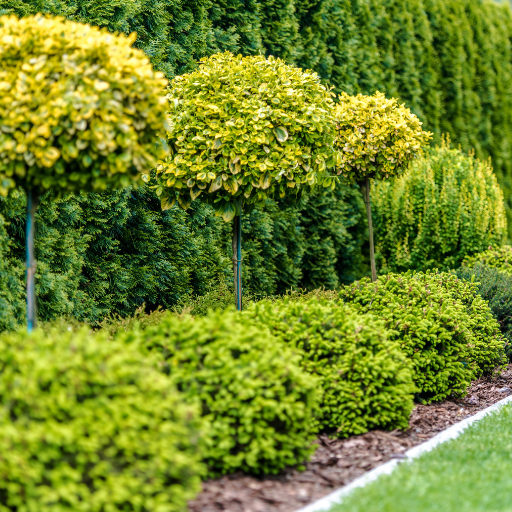
The primary element in Epsom salt is magnesium sulphate which can dramatically improve the health and productivity of fruit trees and bushes. When used, it encourages plants to absorb vital nutrients like nitrogen and phosphorous that help in their growth and fruit development respectively. It is recommended to dissolve a tablespoonful of Epsom salts in a gallon of water as soil drenches during the growing season at blooming for enhanced overall vigor of the plants as well as better fruit size and quality. Another thing that should be remembered is adding this compound to other care elements, such as feeding plants with fertilizers formulated for fruits, besides watering them on a regular basis. Additionally, one should ensure good drainage if one wants to get maximum benefits from Epsom salt application by monitoring soil conditions.
Improving Citrus Tree Health with Epsom Salt
Citrus trees benefit from Epsom salt because it contains a high amount of magnesium, which is important for photosynthesis, among other functions in plants. The use of Epsom salts either as foliar spray or soil amendment helps improve citrus tree health. In this case, you can dissolve 1-2 tablespoons of epsom salts into one gallon water then spray every two weeks onto the leaves throughout the growing phase. This method increases chlorophyll production leading to greener leaves and more fruits grown per plant. Similarly, applying Epsom salts around the base may enhance nutrient uptake while promoting the development of stronger roots. Monitoring soil fertility regularly, ensuring optimal moisture content, and providing balanced fertilization programs are necessary prerequisites that must be met so that positive influences from using Epson salt on citrus trees can best manifest themselves.
Berry Bushes: Increasing Yield and Sweetness
Success in berry bushes thrives on a comprehensive approach that considers proper planting procedures, soil management techniques together, and watering routines, among other aspects, in order to raise yield levels and sweetness index. Such soils should be organic-rich, loamy, well-drained, and slightly acidic to neutral with a pH range of 5.5-7.0. It is also possible to combine balanced fertilizer programs together with intermittent application of Epsom salts to increase magnesium content that results in higher sugar levels as well as improve the overall plant health status. In addition, yearly removal of old canes is necessary for promoting new growth which generally produce sweeter fruits. The water regime should aim at ensuring moisture is constant, more so during fruit growth, if optimum berry sugar contents are to be realized. Besides, one may consider planting companion plants near them that would enhance pollination as well as yield thus making this type of harvest a truly productive and tasty experience.
Nut Trees: Sustaining Growth and Nut Production
Supporting the growth and production of nut trees necessitates a more holistic approach that focuses on soil health, irrigation techniques, and pest management. For optimal nutrient availability, the nut trees should be grown in well-drained soils with high organic matter content that has a pH range of between 6.0 and 7.5. It is necessary to include nitrogen-rich fertilizers in the fertilization program during the growing season as nitrogen supports vegetative growth. Additionally, ensuring consistent watering—especially during key growth periods—supports root development and reduces tree stress. Pest control measures should, therefore, be part of the care program to avoid infestations that would adversely affect nut yield and quality. Lastly, adequate spacing for sunlight exposure and airflow is essential as this helps decrease the chances of disease occurrence, hence promoting healthier development for nuts’.
Indoor and Container Plants: Epsom Salt Applications
A valuable soil amendment for indoor and container plants, Epsom salt – chemically identified as magnesium sulfate – is rich in magnesium, which plays a significant role in photosynthesis, nutrient uptake, and overall plant health. Epsom salt application can increase chlorophyll production leading to better growth in terms of more vibrant leaves. To use it effectively, some people suggest dissolving one tablespoonful of Epsom salts into a gallon jug every month. By doing this, the level of magnesium that is present improves as the calcium intake becomes better and leads to strong cell development. Note that over-applying can cause nutrient imbalances; thus, it’s advisable to know the specific nutrient requirements of plants before incorporating Epsom salt into the care regimen.
Houseplants That Benefit from Epsom Salt
- Tomatoes: This mineral will augment tomato nutrition by particularly enhancing its source of magnesium, which affects fruit quality and yield, especially during regular applications where blossom end rot could be avoided.
- Peppers: Magnesium levels need to be boosted in peppers like tomatoes to facilitate good fruit set and vibrant colour development. In addition, pepper yields are significantly increased when Epsom salt is used on them.
- Roses: It helps roses grow healthier while at the same time making them flower more beautifully. They bloom better due to high levels of Mg ions, hence having more abundant flowers with deeper green foliage caused by increased amounts of chlorophyll produced.
- Cucumbers: If someone wants this vine vegetable plant turning out well then adding some epsom salts onto it is crucial since they help in developing strong stems that support heavy fruits besides healthy leaves.
- Orchids: These delicate plants can benefit from improved nutrient absorption through the use of Epsom salt, which may enhance their floral coloration and result in bigger blossoms.
- Fiddle Leaf Fig: For instance, the magnesium in Epsom salt makes the fiddle leaf fig leaves greener and promotes a healthier plant.
- Azaleas: They should be grown with Epsom salt for healthy, more vibrant flowers and dark green foliage.
- Spinach: Supplementing spinach plants with Epsom salt has been proven to increase their growth rate and allow them to absorb nutrients faster, which makes their leaves look healthier and more nutritious.
Epsom Salt in Container Gardening: Dos and Don’ts
Dos:
- Do dilute appropriately: I put 1 tablespoon of Epsom salt into a gallon of water for regular feedings, ensuring equal distribution among the root systems.
- Do apply during growth phases: When my plants are growing or flowering actively, I will use Epsom salt so as to take advantage of its effects on nutrient uptake with regard to magnesium mostly.
- Monitor soil health: Too much magnesium can lead to imbalances in other nutrients, particularly calcium and potassium, so I always check soil composition periodically.
Don’ts:
- Don’t overapply: Thus far, I have not used too much Epsom salt because it might poison my plants. Sticking to recommended dosages is crucial for me.
- Don’t rely solely on Epsom salt: However much I like this substance, it has now become part of a full fertilization strategy that considers a balanced plant food regimen at large-scale application rates.
- Don’t ignore specific plant needs: Every crop has its unique requirements; thus, one should investigate first before using any when it comes to potted ones only.
How to Revive Stressed Indoor Plants with Epsom Salt
One way of helping indoor plants deal with stress is by using Epsom salt. Composed mostly of magnesium sulfate, Epsom salt helps plants absorb essential nutrients, mainly nitrogen and phosphorus, hence enhancing their general health.
The solution should be made by dissolving 1 tablespoonful of Epsom salt in a gallon of water and then used to water your plants. This can be done once every week during the active growing seasons. Moreover, if you notice that leaves are turning yellow or growing slowly, spraying diluted Epsom salts (1 teaspoon per liter) on them can give an immediate boost as they absorb magnesium directly through their leaves.
It is important to check on plants regularly; this will work well with actions taken against factors such as low light and poor watering which are responsible for the stress. However, it is important not to overdo it because excess magnesium can hinder other vital nutrients from getting into the plant leading to further problems in its health.
Best Practices for Applying Epsom Salt in Your Garden
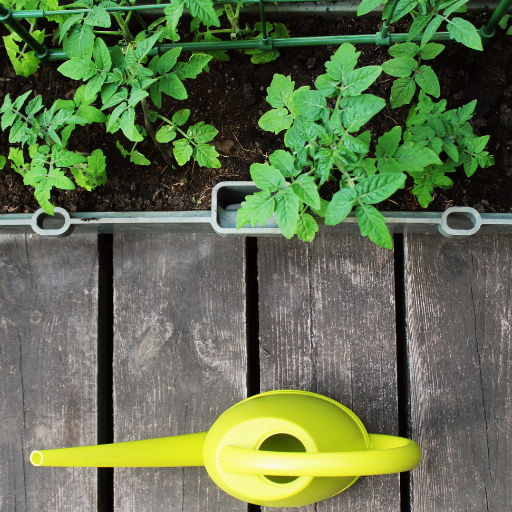
In your garden, Epsom salt needs to be applied according to best practices to maximize its benefits while avoiding any possible negative effects. Primarily, a soil test should be conducted to evaluate the level of nutrients present, and this will help you determine how much Epsom salt you need for a supplementary and not excessive application.
The next step is mixing Epsom salt with the soil during preparation or regular fertilization processes. 1 – 2 tablespoons can be added to each square foot before sowing or used as a side dressing for settled plants. You must observe the effects of using it on the plant closely and adjust accordingly by either increasing or reducing use depending on what has been observed, such as improvement in foliage colour and general vitality.
Finally, the time of application is crucial; the early growth phase is preferred since the uptake of nutrients by plants is easy at such times. In addition, avoid applying during flowering up to fruiting unless signs of a shortage appear because it may interfere with the production cycle. By adhering to these points, gardeners can ensure they effectively utilize Epsom salts to enhance plant health and yield.
How To Rightly Use Epsom Salt: Methods And Techniques
- Dissolution Method: I usually dissolve 1-2 tablespoons of Epsom salt into a gallon of water to make a solution. This ensures equal distribution and increased absorption through the root system, particularly when plants are young. The rationality behind this approach lies in the improved bioavailability of magnesium sulfate, which enhances efficient nutrient access.
- Soil Incorporation: Direct incorporation into the soil involves adding it when tilling few top inches before planting or within growing seasons. Normally, a range between one and two tablespoons per square foot applies to this situation, thus affirming its consistency with good practices that limit excess buildups but maintain a balanced nutrient content.
- Foliar Application: This is sometimes preferred for foliar spray especially when I notice any magnesium deficiency signs such as yellowing leaves (interveinal chlorosis). One quart of water can be used as a spray solution that contains 1 tablespoon of Epsom salt. Consequently, it is easy to absorb quickly through the leaves, especially during stress periods in plants.
Timing and Frequency: When to Use Epsom Salt
Timing and frequency are key factors that determine how well you will apply Epsom salt in your garden. To ensure enough magnesium and sulfate ions are available for ideal growth, epsom salts should be applied at the beginning of the growing season. They also help during important stages of growth like flowering or fruit setting that may lead to good development.
Thereafter, monthly application would be appropriate during growing seasons from spring through fall, especially if soils have inadequate nutrients. Observational cues such as the appearance of magnesium deficiency symptoms on plants should inform timing, so immediate use might be necessary under these circumstances. Finally, adding Epsom salt while preparing soil in autumn boosts its nutrient level before winter ensuring that starting plants have all they need for the next spring.
Monitoring Plant Health: Signs of Malnutrition and Overuse
Plant health monitoring is important in order to detect nutrient deficiencies and prevent the adverse effects of Epsom salt overdose. When these symptoms occur, it indicates that there is a lack of magnesium and thus creates interveinal chlorosis where the tissue between leaf veins turns yellow while the veins remain green. Leaf curling as well as necrosis at tips are other visible clues. To get a measurable sense of how much magnesium is present in soil, it is recommended that soil tests be conducted with optimum soil magnesium concentrations ranging from 50-100 ppm (parts per million).
On the other hand, too much Epsom salt can be toxic with implications such as retarded growth rate and burnt leaves. Concentrations exceeding one tablespoon per gallon will have deleterious effects due to excess magnesium, which interferes with the uptake of other essential nutrients like calcium and potassium. It would be better if monthly application guidelines during growing seasons were used so that any noted signs are compared against soil test results for accurate diagnosis. The monitoring strategy empowers gardeners to maintain optimal nutrient balance for healthy plants.
Reference sources
-
A Garden Diary
- Source: A Garden Diary
- Summary: This article lists nine plants that benefit from Epsom salt, including pepper plants, which can be treated by mixing 1 tablespoon of Epsom salt with a gallon of water.
-
Trees.com
- Source: Trees.com
- Summary: Epsom salts are beneficial for some plants, especially roses, tomatoes, and peppers, helping to provide essential micronutrients and improve plant health.
-
Garden.org
- Source: Garden.org
- Summary: Gardeners use Epsom salt on tomatoes, peppers, and roses to produce more flowers, greener plants, and higher yields by improving magnesium levels in the soil.
Frequently Asked Questions (FAQs)
Q: What is Epsom salt, and how does it benefit plants?
A: Epsom salt is a naturally occurring mineral compound of magnesium and sulfate. It benefits plants by improving nutrient absorption, enhancing photosynthesis, and promoting stronger growth, especially in magnesium-deficient soils.
Q: Which plants are most likely to benefit from Epsom salt?
A: Plants that are heavy feeders of magnesium, such as tomatoes, peppers, roses, and citrus trees, are most likely to benefit from Epsom salt. Acid-loving plants like azaleas and hydrangeas also thrive with its application.
Q: How often should I apply Epsom salt to my plants?
A: The frequency of Epsom salt application depends on the plant type and soil conditions. Generally, once a month during the growing season is sufficient for most plants, but heavy feeders may require more frequent applications.
Q: Can I use Epsom salt on indoor plants?
A: Yes, Epsom salt can be used on indoor plants, particularly those showing signs of magnesium deficiency, such as yellowing leaves. However, it’s essential to use it sparingly to avoid over-fertilization.
Q: How do I apply Epsom salt to my garden?
A: Epsom salt can be applied directly to the soil, mixed with water for a foliar spray, or dissolved in water for a soil drench. The method depends on the plant’s needs and the gardener’s preference.
Q: Are there any risks associated with using Epsom salt on plants?
A: While Epsom salt is generally safe, over-application can lead to excess magnesium in the soil, which may interfere with the uptake of other essential nutrients. Always follow recommended dosages and monitor plant health.






